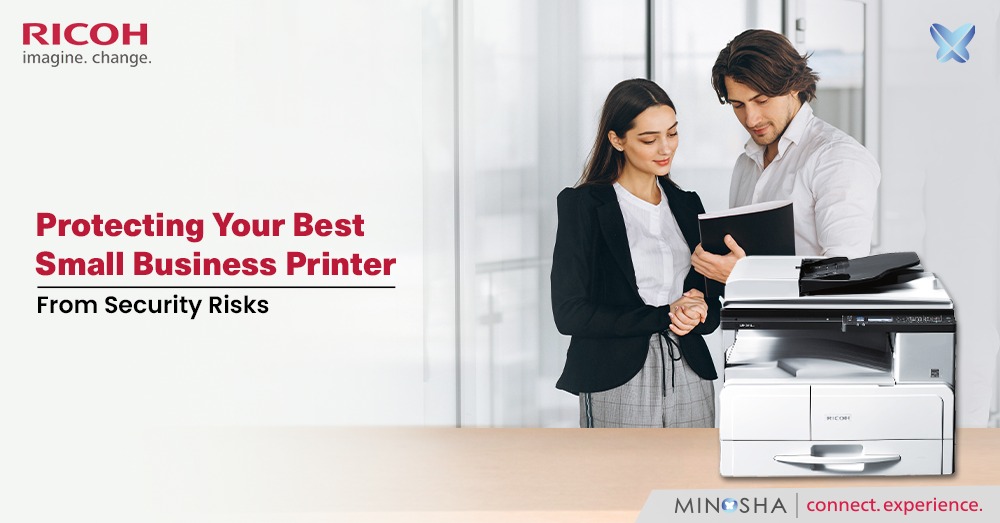
With the way technology is booming, threats related to it are also increasing on a daily basis. There are more and more cases of phishing and ransomware attacks and protecting your businesses from these has become a real challenge. In a world where all our data is on our devices and the cloud, everything becomes a potential risk, including best small business printers. The pandemic saw a rise in how much time we spend on our decides and the information shared also grew ten folds. A lot of attackers pose as a corporate entity and send false COVID-19 information as an excuse to business’s employees and customer base and trick them into sharing valuable information. Access to this confidential information gives way to illegal activities such as hacking and hijacking of your network.
Any average business owns or leases best small office printers that serves its copying, scanning, printing and faxing needs. These smart machines might make your lives easier in the moment but are a significant cyber target in the longer run. Data can be stolen or held for random. Some attackers temporarily disable your devices to create a distraction while they get prolonged access to your precious information. Since a business cannot survive without these machines, you need to invest time, energy and capital to protect them. Some steps that need to be taken to ensure your business is not a victim of these elaborate crime schemes are :-
1. Limited access and policy implementation
You need to enforce strict policies and ensure only a few trusted employees have access to office devices. Moreover, you also need individuals that monitor the on-ground situation and ensure these policies are strictly adhered to. Having some type of a security protocol helps ensure authentication of the user and contributes towards saving your data and your resources. This has emerged as “pull printing” which gives access to devices only via strong passwords or biometrics.
2. Network protection
Make sure your technology is securely integrated with the network and prevents outside intrusions. It goes without saying that external access should be strictly blocked.
3. Device protocol
Only the main server should have access and users should get to use the device via a share on the server. However, some companies find this extremely inconvenient and time consuming to implement. The downside to this is also that you have to give a lot of employees access to your server, which adds to the threat of cybercrime and theft. A lot of vendors simply install a printer drive that enables each user to print directly. There should be an additional authentication step to avoid this. Hard drives should also be encrypted to add a layer of security. USB direct printing ports are a hard not as they can be the gateway to viruses or malware. Moreover, security updates should be conducted diligently on all your printing devices.
4. Service end protocols
Before the office equipment is retired and disposed of, it should be wiped completely and double checked to ensure all data on it is destroyed. Trained technicians should be hired to do the job thoroughly.
At the end of the day, your data is your responsibility, be it personal or official. If you don’t watch your printers, you could land in trouble. Speak to our experts at Minosha India today or visit www.minoshaindia.in
Subscribe to our Newsletter for Exclusive Insights and Updates!
